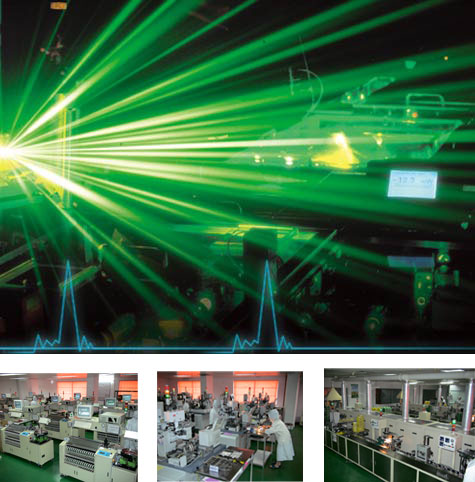Application

A.Cleaning: The Solvent List as below: B.Forming: Any stress to epoxy could damage the gold wire in LED. Please keep in mind. D.Soldering: E.Brightness and Color:
The unspecified chemical liquid do not use to clean LED, They could damage the epoxy of the LED.
If the LED must clean, to dip the LED in freon TE, alcohol or chlorosen at normal temperature for less then 1 minute. If the chemical solution is unspecified for the LED cleaning, It will crack or haze on the surface of the lens. To refer the Fig (1)
Adaptability
Trichloroethylene,Chlorothene,Thinner,Acetone
X
Isopropyl
Alcohol,Ethyl Alcohol
O
If forming required, It must be done before soldering. Do not form during of after soldering.
Form leads pin by securing under tie bar cut and bending with pliers or the equivalent to avoid pressure on resin.。
C. Avoiding Overcurrent:
Do not overcurrent
Circuit must be designed so that overvoltage (overcurrent) is not applied to LED during ON/OFF switching Transients or pulse current can damage the junction of the LED chip.
In order to operate the LED under stable conditions, put protective resistor in series, Resistor Values can be determined by supply voltage or current for the LED. Recommended for use is in the range of IF10mA to 20mA.See below Fig (4)
1.Solder under tie-bar cut as show in Fig (5). Hold pin leads, with tweezers during soldering,especially for smaller LED.
2.Lead forming should be not added any stress to the LED body, to do so can fracture the device epoxy and possible break bond wire, which will cause failure. See Fig (6)
3.If stress is applied LED while it is being on P.C. board disconnection may occur during soldering or after mounting due to creep. Lead pin mounting holes must coincide with original or formed lead pin pitch to prevent stress. See
4.When an LED is mounted into P.C. board, pitch spacing should be carefully aligned so as not to cause any stress to the lead wires. Otherwise the stress will cause problems in high temperature operation. Three minutes are necessary for the LED to return to normal temperature after solder operation.
5.If soldering one line of LED on a P.C. board by using a soldering iron, do not solder both the leads of the LED at same time, See Fig (7).
6.The soldering iron should be operated at under 30W power consumption.
7.About the Red Power LED soldering conditions list is shown as below:
Method
Conditions
Temp.
Time
Fig.
Soldering
method
1. Solder
Iron: 30W
2. Tip:
4.5ψx 32mm
3. Through
hole P.C.B.
1.6mm thick Tip Temperature:295℃ ± 5℃ at once
Less
than 3sec.

Soldering
bath method
Dip
LED up to 4 mm from resin.
Soldering
Temperature:
250℃ ± 10℃ at once Less
than 5sec.

Reflow
Solder method
1.
Pre-heat is 150℃ max
2.
Less than 5min. Soldering
Temperature:
230℃ ± 10℃ at once Less
than5sec.
1.For obtain even brightness multiple LED should be kept at same current.
2.It checked at a distance of 30cm from the LED to the eye detects.
3.To increase brightness, increase current. But the current conditions depend upon the detail specification of chip.
4.Usually the Red Power LED color is the 20mA current condition .If the current is not normal current condition on operation then the LED color will be changed. About the changed depend upon the detail specification of chip.